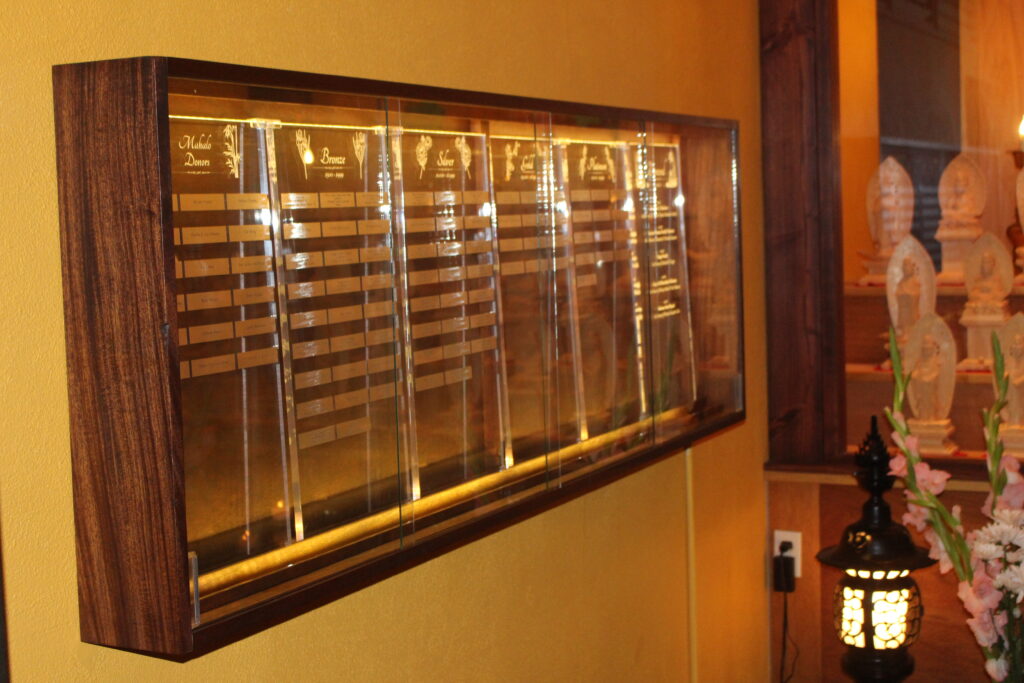Kannonko
Monthly Service dedicated to Kannon sama
Throughout various regions of Japan, groups of 33 temples became pilgrimage routes for Buddhists. Housed within each temple is a Kannon statue. It is believed that going on a pilgrimage (Kannon Junpai) to visit the 33 Kannon statues brings good health and prosperity.
Hawaii does not have 33 different pilgrimage site, so the treasured practice of the “Kannonko” was born. This monthly service, dedicated to Kannon sama, is symbolic of the pilgrimage practiced in Japan.



Kannondo
Kannon Hall
The Soto Mission of Aiea’s Kannondo, or Kannon Hall, was one of the major projects for the Soto Mission of Aiea’s 100th Anniversary.
Housed within the walls of the Kannondo on the left side of the Taiheiji’s main altar are 33 wooden carvings of Kannon-sama 三十三観音. Kannon-sama is a bodhisattva, who, motivated by great compassion, has generated the spontaneous wish to attain Buddhahood for the benefit of all sentient beings. In other words, Kannon-sama is an enlightened being, who, through boundless compassion, has made the eternal vow to help others to attain enlightenment. The Lotus Sutra (Skt. Saddharma Puṇḍarīka Sūtra) describes Kannon-sama as a bodhisattva who appears in thirty-three different form in order to teach the Dharma to sentient beings. Taiheiji’s Kannon-sama statues are directly based upon the original drawings of the Bukkyo Zui (仏教図彙), a book of Kannon drawings from 1783. The Bukkyo Zui was chosen because of its unique interpretation of each of the 33 Kannon. Whether it is the posture of the statue or the scenery around the statue—each tells a different story.
Each statue is carved out of hinoki, or Japanese Cypress wood (Chamaecyparis obtusa). Hinoki is grown for its very high quality timber in Japan, where it is used as a material for building palaces, temples, shrines, traditional Noh theatres, and baths. The wood is lemon-scented, light pinkish-brown, with a rich, straight grain, and is highly rot-resistant. Each statue stands roughly 15 inches in height.
All 33 statues, as well as the larger and central Sho Kannon (standing approximately 36 inches in height), were carved by a single craftsman in Japan, and had been sent to Hawaii as they were completed, a process spanning a period of about five years (beginning in 2013).
The Kannondo serves as a spiritual refuge for its members, families, and friends, where they can receive guidance, blessings, and inspiration.
